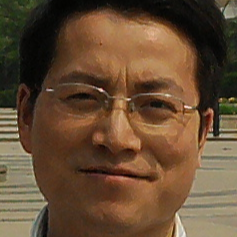
Yihua Tang
Work place: School of Astronautics, Northwestern Polytechnical University, Xi’an, China
E-mail: tangspace@163.com
Website:
Research Interests: Computational Engineering, Engineering
Biography
Yihua Tang was born on December, 1978. He received the B.Sc., M.Sc. and D.Sc. degrees from Northwestern Polytechnical University in 2001, 2004 and 2007 respectively. Then he spent two years (2007-2009) in China Academy of Launch Vehicle Technology (CALT) as a postdoctoral researcher. In 2009, he joined Northwestern Polytechnical University as a teacher. His representative published articles lists as follow: A Genetic Algorithm (GA) Method of Orbit Interception with Finite Thrust (Journal of Northwestern Polytechnical University, 2005), A Precise Initial Guidance Law for Orbit Interception (Flight Dynamics, 2006), Midcourse Guidance Based on Zero Effort Miss for Exo-Atmospheric Intercept (Flight Dynamics, 2007), Intercept Optimization of Exo-Atmospheric Interceptor Based on Genetic Algorithm (Transactions of Nanjing University of Aeronautics & Astronautics, 2007), Online Reentry Guidance for Reusable Launch Vehicles (Missiles and Space Vehicles, 2010), Second Generation Reusable Launch Vehicle and its Reentry Guidance Technologies (Missiles and Space Vehicles, 2010), Rapid Reentry Trajectory Planning Based on Nonlinear Optimization of Terminal Matching (Journal of Astronautics, 2010), Reentry Trajectory Planning Based on Genetic Optimization of Terminal Matching (International Conference on Electronic & Mechanical Engineering and Information Technology, 2011). His research interests include Flight Vehicle Design, Dynamics and Control.
Author Articles
Pattern Formation in Swarming Spacecrafts using Tersoff-Brenner Potential Field
By Zhifeng Zeng Yihua Tang Shilu Chen Min Xu
DOI: https://doi.org/10.5815/ijisa.2013.06.01, Pub. Date: 8 May 2013
We present a distributed control strategy that lets a swarm of spacecrafts autonomously form a lattice in orbit around a planet. The system, based on the artificial potential field approach, proposes a novel way to divide the artificial field into two main terms: a global artificial potential field mainly based on the famous C-W equations that gathers the spacecrafts around a predefined meeting point, and a local term exploited the well-known Tersoff-Brenner potential that allows a spacecraft to place itself in the correct position relative to its closest neighbors. Moreover, in order to obtain convergence from all initial distributions of the spacecrafts, a dissipation term depended on the velocity of agent is introduced. The new methodology is demonstrated in the problem of forming a hexagon lattice, the structure unit of graphite. It is shown that a pattern formation can operate around a planet. By slightly changing the scenario our method can be easily applied to shape other configurations, such as a regular tetrahedron (with central point), the structure unit, etc.
[...] Read more.Other Articles
Subscribe to receive issue release notifications and newsletters from MECS Press journals